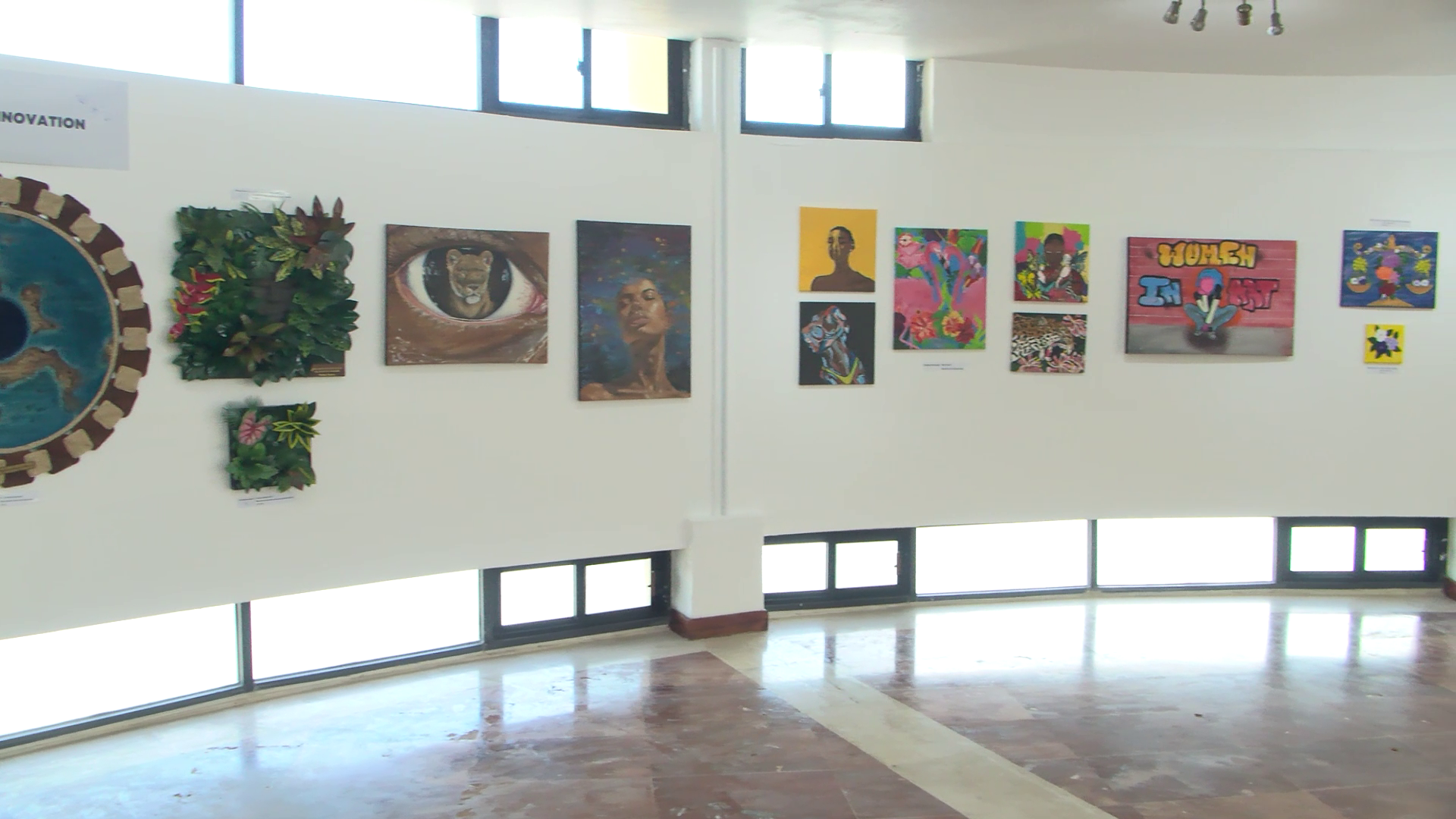Ever fallen in love with a carving, sculpture, or painting so much that you just had to bring it home? You find the perfect spot to display it, and soon, your family and friends are sharing their own interpretations. That’s the magic of visual art—artists communicate their thoughts and emotions through their creations. Today, we caught up with three senior students from St. John’s College’s Art Class. They shared how they speak to their audience through various forms of art, be it traditional, abstract, or graphic design. News Five’s Marion Ali brings you this week’s edition of Belize on Reel, featuring these talented young artists.
Marion Ali, Reporting
Today, in a classroom at St. John’s College, three senior students are hard at work. But to them, it doesn’t feel like work at all. They’re lost in their own creative worlds where there are no limits, and anything is possible. As they create their art, they hope you’ll pick up on the subtle messages woven into their pieces.
Amare Perrera, Art Student, S.J.C.
“All of the other subject courses that you could have taken, really put you in a box and it limits you to what you can do. But to me, art really bridges that gap, and it allows you to be yourself and creative, express yourself freely and yeah, have creative freedom.”
Amare Perrera loves to express himself through abstract art, and he envisions his name standing proudly alongside renowned Belizean artists like Terryl Godoy, Yasser Musa, and Alex Sanker.
Amare Perrera
“It’s art that anyone can interpret, anyone can have their own opinion on that type of art, and I, I think that can be the same thing. You can say about a person, anyone can interpret you however way they like. So, I like the parallels that abstract art has to real life. Some people would look at abstract art and say, hmm, I can’t figure it out. The artist may have a meaning behind that art and to me, as long as the artist has their own opinion on their art, that is the only thing that can hold true. Anyone can interpret anything in any way they like.”
Rehan Beltran says he has been drawing and painting since he was much younger, but his preference lies in digital technology and with a special twist, with music to change the mood of how you view his art. Even if you have visual challenges, Amare says the music can paint a picture of what he’s created on his screen.
Rehan Beltran, Art Student, S.J.C.
“Seeing that the school gave both music and art together. This is the perfect thing. Depending on the music, I think it changes the way you interpret art itself.
For people who have visual challenges, then the music definitely is going to assist them, because the music that I choose is going to equal and parallel to the art piece that is going to help them understand what I’m trying to bring across.
I love digital art. I think I prefer digital art more than anything else, just because I feel like I can do anything with that because there’s infinite possibilities. I can make any number of mistakes that I’d like to, and I can just undo it with just one click of a button. So, if I were, if I didn’t like anything in my brainstorming process, then I could just remove it, just like that.”
Rehan uses a computer to create his art, but Derek Luna Monteroso prefers traditional art. He found his passion for painting during the COVID lockdown, making the decision to major in art an easy one.
Derek Luna Monteroso, Art Student, S.J.C.
“During COVID, it was the time when I let out the skills of art because I couldn’t go to no field to play sports, so I had to stay at my room playing art, um, practicing art. So, that was when I was in second form. When I started third form, I saw the opportunities. They had computer science, they had business, and they had humanities. And then when they started to explain more what was humanities – they added visual arts, graphic design, and music, those were the ones that matched my choices. I started drawing direct drawings like people, and plants, flowers, buildings. Cartoons.”
Guided by their art teacher, Tiana Twist, the students learn that their creations reflect their innermost thoughts and feelings. She inspires them to pour their hearts into their art.
Tiana Twist, Art Teacher, S.J.C.
“In the beginning, we do a little bit of history, what the boys know, and then from there we go into a lot of brainstorming. What do we want to bring on this paper or on this canvas? And then we start off with basic shapes. I believe that art start off from the foundation, which is circles, triangles, squares, rectangles, and then we merge those together to make form, form, um, form, transfer into creating 3D objects, and then from 3D objects we add shading to make realistic pieces. My class is very untraditional. I don’t want them to feel that we’re in a traditional setting 365 days a year. So, when you come into class, I want them to leave everything outside, and you’re coming into a whole setting where you can be yourself. That way when you create your art, you’re creating what you feel.”
What Derek Luna Monteroso feels when he picks up his brush is something he invites youths his age to explore.
Derek Luna Monteroso
“When you feel bored, don’t just play games, play it. Don’t do nothing that will benefit you. You can just do, grab a piece of paper, a pencil, crayons, and start drawing art. Because I can bet you that will be the best hobby.”
Marion Ali for News Five.
